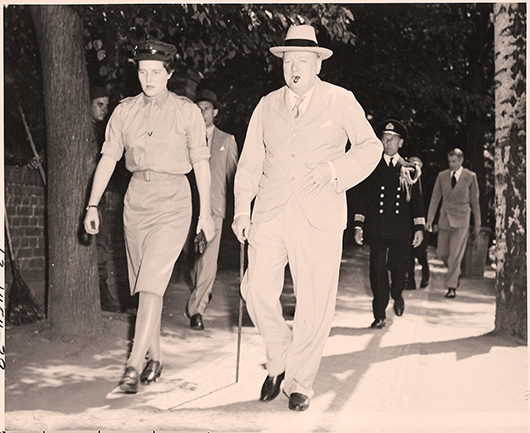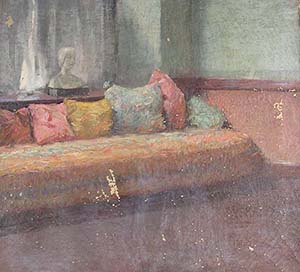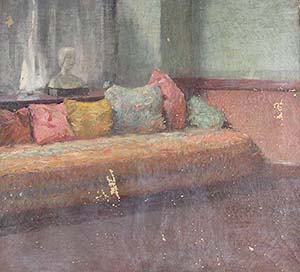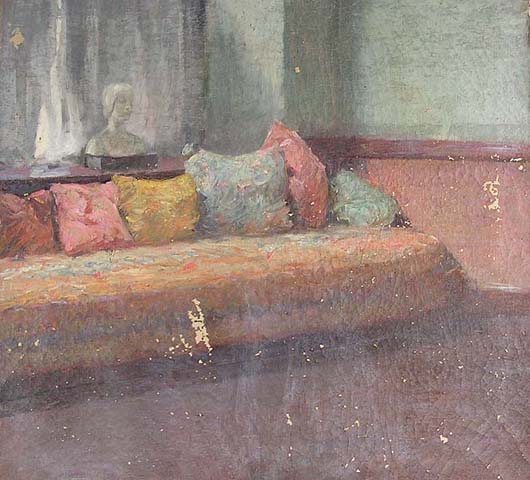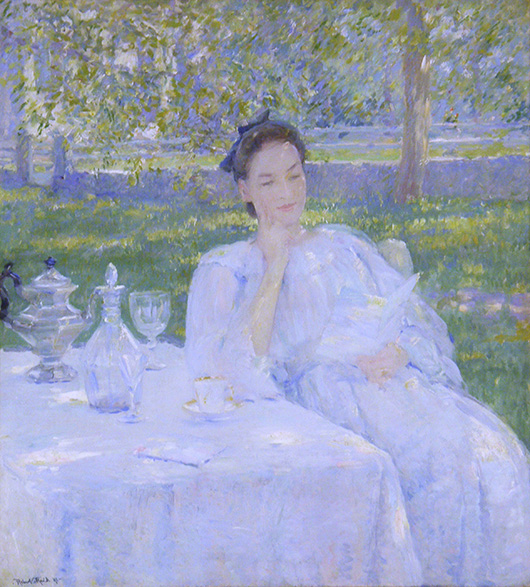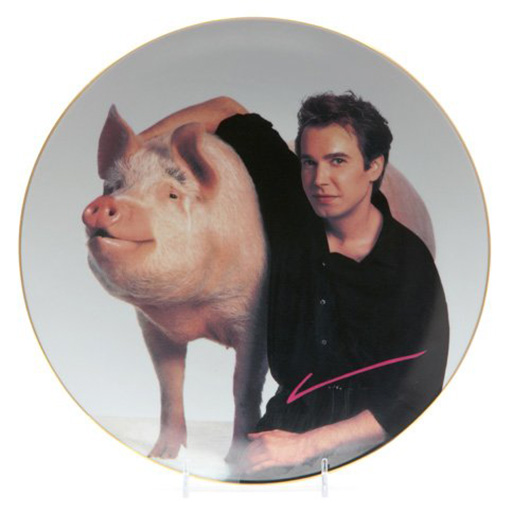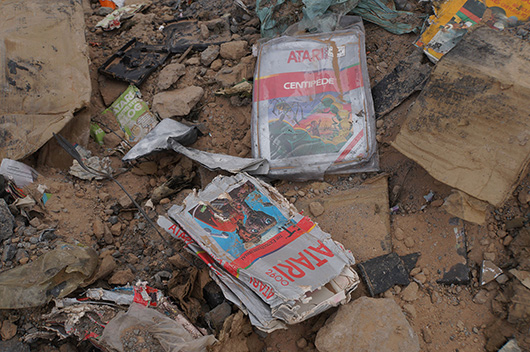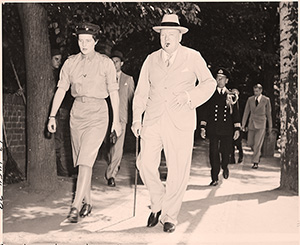
The 15 paintings included views from his holidays in France as well as the interiors of his home in Chartwell near London and Blenheim Palace, where the cigar-chomping aristocrat was born.
The works in the Sotheby’s auction came from the personal collection of his daughter and confidante Mary Soames, who died May 31.
The Goldfish Pool at Chartwell“, showing the garden pond where the statesman used to feed fish whose descendants still swim there today, sold for 1.8 million pounds ($2.8 million, 2.2 million euros), a record for a Churchill painting.
The paintings provide a rare insight into the World War II prime minister’s family life and the talent that his daughter said had helped him escape the rough and tumble of political life.
Sotheby’s said it was “the most important and personal group of his paintings ever to come to the market.”
The sale gives “a unique and very moving insight into the private side of Britain’s greatest war-time leader,” the auctioneers added.
Art historian David Coombs said it was “a sublime group of some of the best of Churchill’s work and his most important subjects.”
The 280-lot sale entitled “Daughter of History” included a battered red leather briefcase used by Churchill when he was Secretary of State for the Colonies between 1921 and 1922, which sold for 158,500 pounds.
Other items sold were a silver water jug inscribed “Egypt 1942, To Winston from his colleagues from the War Cabinet” and a cigar humidor, which could have belonged either to Churchill or his daughter, who also enjoyed a puff, which sold for 21,250 pounds.
Soames worked alongside her father during the war years, meeting with the famous leaders of the time.
Aged just 23, she helped to organize a dinner with U.S. president Harry Truman and Soviet leader Joseph Stalin at the Potsdam Conference in 1945.
Soames, a baroness, went on to marry politician Christopher Soames, who served as Britain’s ambassador to France and was the last British governor of Southern Rhodesia – now Zimbabwe.
Sotheby’s Europe chairman Henry Wyndham said the items “tell the story of a truly remarkable woman and her family, whose personal experience of the great moments and characters in our recent history is utterly captivating.”
Churchill began painting when he was 40 following the disastrous 1915 Dardanelles campaign during World War I, which he was responsible for as First Lord of the Admiralty.
Soames herself said that painting helped him “to confront storms, ride out depressions and to rise above the rough passages of his political life.”
A painting of Carcassonne in France was the first picture that Churchill gave to his daughter.
The other paintings of France were a view of Cannes harbor and a chateau in Normandy.
Art brought Churchill into contact with leading painters of the time as tutors and friends.
John Lavery and Walter Sickert were major influences, and friends and artists regularly visited Chartwell, which is now a museum.
The auction comes ahead of the 50th anniversary of Churchill’s death on Jan. 27.
ADDITIONAL IMAGE OF NOTE
